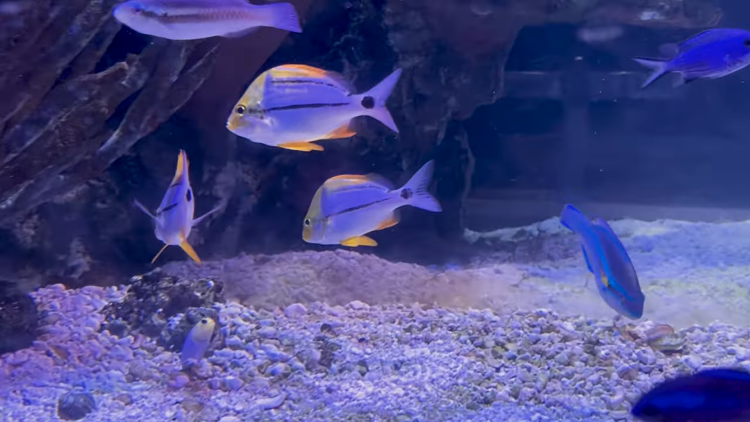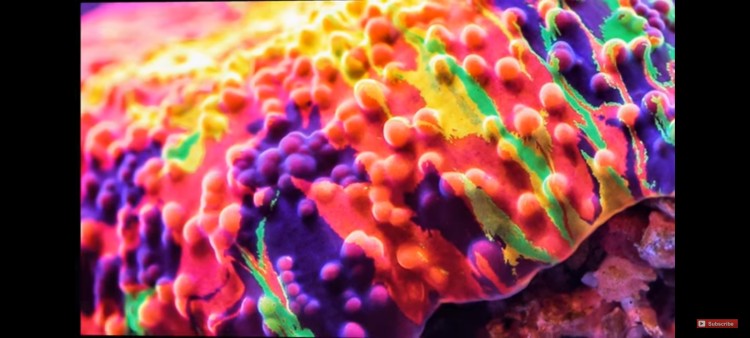All About the Princess Parrotfish
- Apr 26, 2024
- Anshika Mishra
- 212 0 0

In this article, we'll discuss a Parrotfish species - the Princess Parrotfish. They have vibrant colors that will catch anyone's eye. They have almost neon-looking pinks, blues, greens, purples, and so many other colors across their body, and a lot of white in between makes them stand out.
Prices: A juvenile Parrotfish typically costs around $60 and is about 2-3 inches long. If you want a large adult-size Parrotfish, it costs around $180 to get one about 6-8 inches long.
Tank size: It is recommended that they be kept in at least a 120-gallon fish tank. This size will give them about 6 feet in length, precisely what the parrot fish needs. Parrot fish are very active fish. Watching them catch some speed in a power head and zoom across the tank is fun.
They are also great swimmers. So, you'll see them go in and out of caves, swimming upside down, looking for food. A typical tank will have a nice sand bed for them to mess around with lots of live rocks to form caves, overhangs, and arches, to give the fishes a playground to swim through.
You also want to cover them with a glass lid, as they can get slightly jumpy when first added to the tank. Be careful there. Make sure everything is covered.
Care level: It can be a bit tricky for the Parrotfish. Many people have trouble keeping them in captivity, and these fish are often only seen at big public aquariums. But you can still set yourself up to thrive in your Yuro home tank.
It's best to keep them in a seasoned tank that's at least a year old, one that you've got a pretty good handle on, with fluctuations and water parameters that will hurt this fish. You want to make sure you have things under control, you feel comfortable with the tank, and you're ready to tackle a parrotfish in there.
Temperament: They are peaceful fish. But during feeding time, they'll push everyone out of the way to get the food first. These fish are not going to be safe in your reef tank, and this really affects their diet. In the wild, they look for algae all day long.
Their beak-like teeth allow them to scrape off algae from rocks and dead coral skeletons. The issue in a home aquarium is that a parrot fish will not typically have a lot of skeletons killed to chew out throughout the day. So, they will resort to your living corals to take a chunk out of.
What's wild is that they aren't really eating the fleshy part of the coral. They digest the Zoas for an energy boost and excrete the remaining skeleton, which acts as new sand in the ocean or your aquarium.
Water Parmeter
Temperature: 72-78
dKH: 8-12
pH: 8.1-8.4
Salinity: 1.020-1.025
The other levels you really want to keep an eye on are your Ammonia, Nitrates, and Phosphates. These spikes are gradually getting too high and can harm the fish. You want to make sure they stay on top of it. Keep up with your water changes.
Parrot fishes can reasonably get large. Some in the wild are recorded to be almost 2 feet long. They can get about 14 inches in the tank set up by adulthood. So, you want a long tank because of its size.
Diet
They are omnivores, so they eat both algae and meaty food. For the algae, it would be best if you have some hair algae or some types of algae grow in the tank. This way, they'll have something to chew on when first introduced into the tank.
You can supplement this with algae on the clip.
They can eat krill, Mysis, brine shrimp, and even clams for meaty food. They are a messy eater, mainly if you feed them something like shrimp or those clams on a half-shell. They will tear that stuff up and spit it all around the tank.
More About the Princess Parrotfish
They come from the Caribbean and other surrounding islands; a lot of the shots you see them from are from Florida.
They do well with other reef fish, such as Wrasse, Tangs, Angels, Gobies, Clowns, and more.
The fishes like to sleep right on top of the sand or sedge beside some rocks, so don't freak out if you spot them in the morning when they look flushed.







About author